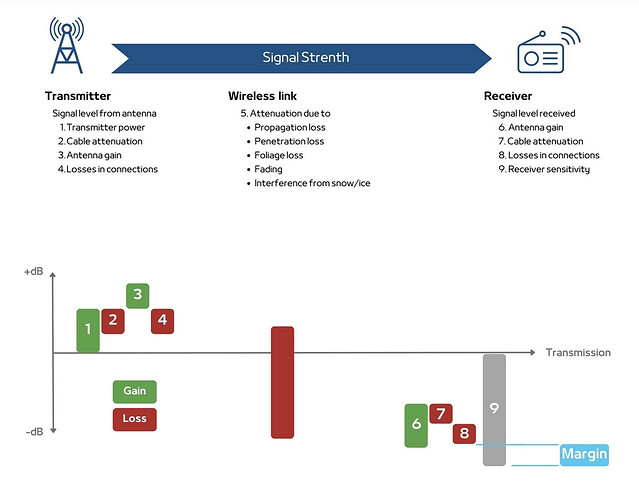The link budget is important in any wireless communication systems. Link budget calculations apply to all wireless connections, including those that use lorawan, ltem and nbiot.
A link budget shows how a communication signal is amplified and weakened in a connection between two points in a communication system. The calculation of link budget is important to determine if the power and amplification levels are sufficient in a system and to take corrective measures if required.
A simple equation for link budget is: Received Power (dBm) = Transmitted Power (dBm) + Gains (dB) – Losses (dB). Power levels are expressed in (dBm), and power gains and losses are expressed in decibels (dB). To develop a radio link budget formula, one must examine all parts of the system where gains and losses can occur between the transmitter and receiver.
The most significant attenuation is found in the air, and obstacles like trees and mountains cover the Fresnel zone and add losses due to partially blocked line-of-sight. The link margin is the difference between the received signal power and the minimum required to maintain a reliable communication link. The link budget calculation helps to identify potential sources of interference that could impact the wireless link’s performance, and by thoroughly analyzing the link budget, one can identify areas of the wireless communication system that require improvement or optimization.
Credits: ![]()
Read more (complete article):
